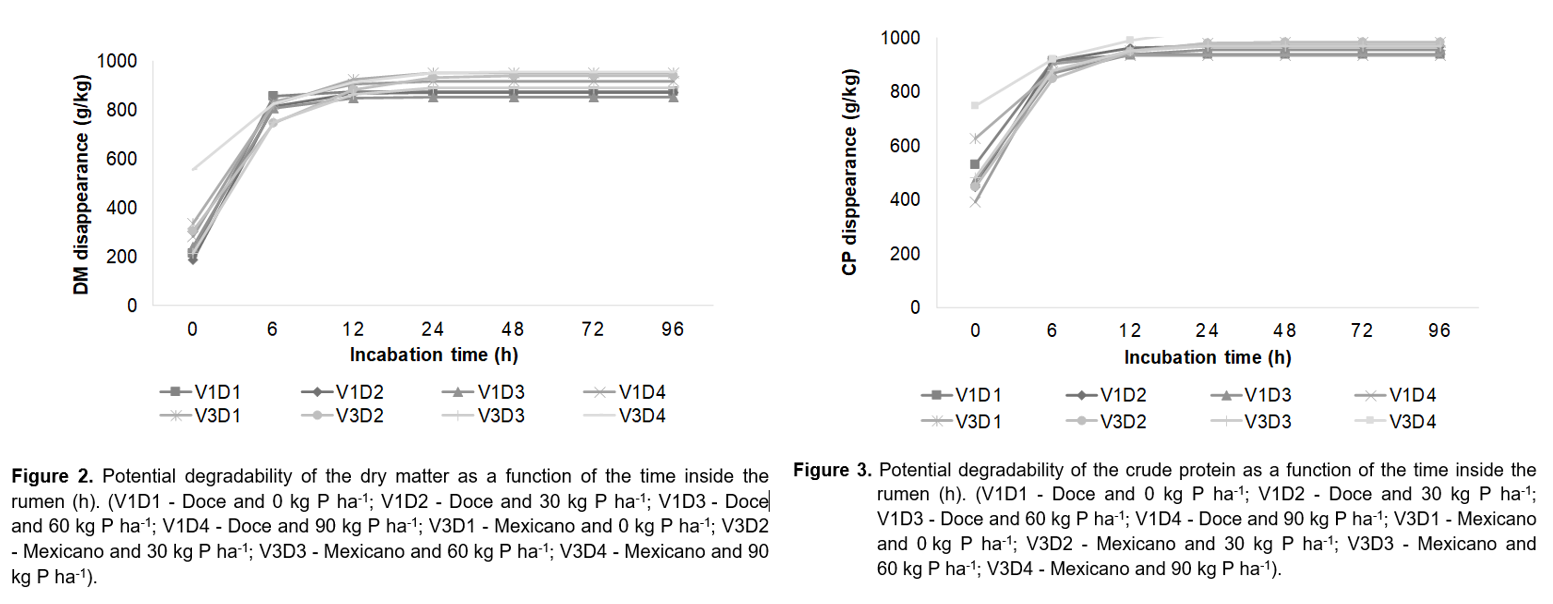Phosphate fertilization increases the production and nutritional quality of forage cactus genotypes in a region of semi-arid climate
DOI:
https://doi.org/10.56890/jpacd.v23i.324Keywords:
chemical composition, degradability, Nopalea sp., Opuntia sp.Abstract
The study aims to evaluate the effect of phosphate fertilization on yield, chemical composition and in situ degradability of different cactus pear genotypes under semi-arid climate conditions. A randomized complete block design was adopted, the plots being three cactus pear genotypes [Doce and Baiano (Nopalea cochenillifera) and Mexicano (Opuntia tuna)] and the subplots being four phosphorus levels in the soil (0; 30; 60 and 90 kg P ha-1 year). The highest total green forage mass yield (TGFM) was observed in the genotype Mexicano with 87,830 ± 4,220 kg ha-1, and there was an increase of 34,630 kg ha-1 of TGFM when 90 kg of P ha-1 was used. The neutral detergent fiber content showed linear response with increase of 0.285 g kg-1 for each kg of phosphorus applied. Regarding the genotype Doce, the highest degradation values of fractions “a”, "b" and "c" of the dry matter (DM) were observed at the levels 90, 0 and 90 kg P ha-1 year, respectively, and of the crude protein (CP) at the levels 0; 0 and 60 kg P ha-1 year, respectively. Phosphate fertilization increases yield and improves the nutritional value of cactus genotypes in region of semi-arid climate.
Publication Facts
Reviewer profiles N/A
Author statements
Indexed in
- Academic society
- Journal of the Professional Association for Cactus Development
- Publisher
- Professional Association for Cactus Development




